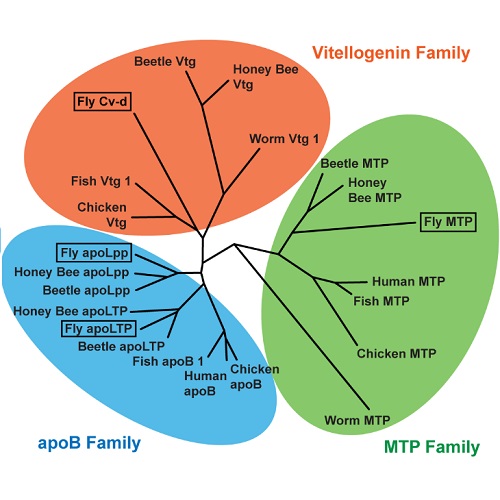Lipoproteins in Drosophila melanogaster--assembly, function, and influence on tissue lipid composition.
Interorgan lipid transport occurs via lipoproteins, and altered lipoprotein levels correlate with metabolic disease. However, precisely how lipoproteins affect tissue lipid composition has not been comprehensively analyzed. Here, we identify the major lipoproteins of Drosophila melanogaster and use genetics and mass spectrometry to study their assembly, interorgan trafficking, and influence on tissue lipids. The apoB-family lipoprotein Lipophorin (Lpp) is the major hemolymph lipid carrier. It is produced as a phospholipid-rich particle by the fat body, and its secretion requires Microsomal Triglyceride Transfer Protein (MTP). Lpp acquires sterols and most diacylglycerol (DAG) at the gut via Lipid Transfer Particle (LTP), another fat body-derived apoB-family lipoprotein. The gut, like the fat body, is a lipogenic organ, incorporating both de novo-synthesized and dietary fatty acids into DAG for export. We identify distinct requirements for LTP and Lpp-dependent lipid mobilization in contributing to the neutral and polar lipid composition of the brain and wing imaginal disc. These studies define major routes of interorgan lipid transport in Drosophila and uncover surprising tissue-specific differences in lipoprotein lipid utilization.

- PLoS Genet. 2012 Jul 26;8(7):e1002828
- 2012
- Cell Biology
- 22844248
- PubMed
Enabled by:
